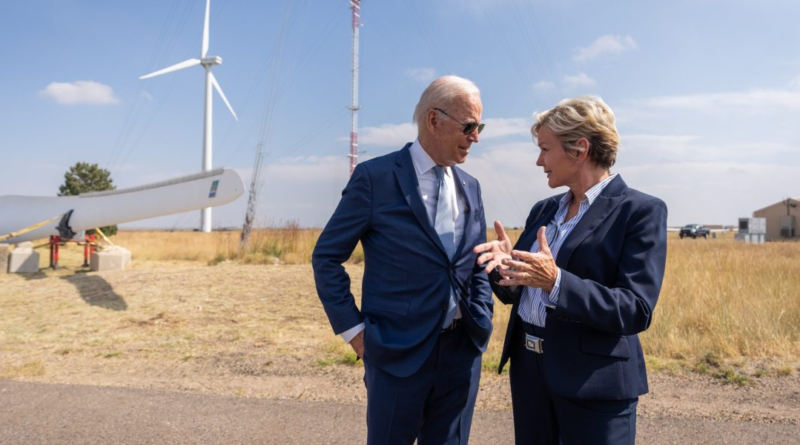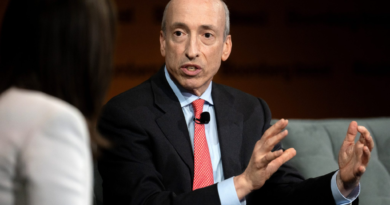Biden's climate law enriches middlemen while leaving less money for green projects, says clean-energy investor overseeing $50B in assets
One of the world’s biggest green investment managers is voicing frustration over some key features of President Joe Biden’s landmark climate law.
Impax Asset Management, which hailed the Inflation Reduction Act as a game changer shortly after it was unveiled in mid-2022, now says the legislation has too many built-in hurdles that are delaying implementation and enriching middlemen while leaving less money for green projects.
The IRA’s clean-energy tax credits are an important part of the bill, but they’re also “overly complex from a financial structuring point of view and not lending themselves very well towards a replicable, scalable system,” according to Charlie Donovan, senior economic adviser at Impax.
The upshot is the US has “set that whole system up to be dependent upon a few industries of which the banking industry is one,” Donovan, who’s also a professor at the University of Washington, said in an interview. “The tax consultants — and the banks arranging it — have made a lot of money, but it doesn’t lend itself to a really efficient, fluid system in which you can push a lot of money at scale.”
The comments follow a year in which the initial fanfare surrounding the IRA has been tempered by the administrative rigmarole of trying to channel billions into the real economy. BloombergNEF says the law may cut US energy-related emissions in half by 2050 from 2021 levels, if it’s applied properly. But it’s up to US agencies, including the Treasury Department, to write the actual rules that will determine how all the tax credits are implemented in practice, BNEF also notes.
Impax, which oversees about £40 billion ($50 billion) in assets, was among the first big sustainability-focused investors to welcome the IRA as a bill with the potential to change the future of green finance. One year ago, Impax said it was reviewing its portfolio with a view to getting maximum mileage out of the new legislation, which is intended to boost everything from wind energy, to solar and electric-vehicle supply chains.
Since then, however, green investors have faced huge losses. Even though the IRA has undeniably helped boost green energy capacity, it hasn’t been able to salvage asset valuations. Instead, higher interest rates and supply-chain bottlenecks have hobbled clean-energy project finance, pummeling capital-intensive renewables sectors such as wind and solar. The S&P Global Clean Energy Index ended last year down more than 20%, compared with the 24% gain of the S&P 500.
That’s left a painful dent in the portfolios of investors exposed to low-carbon stocks, such as Impax. Last year, shares of the London-based asset manager fell 24% after slumping 51% in 2022.
Donovan acknowledges there have been “setbacks.” But he also says the outlook for 2024 is more promising, a view that’s backed by analysts at some of the world’s biggest banks, including JPMorgan Chase & Co. and UBS Group AG.
“We expect a strong recovery for companies well positioned in the clean energy value chain,” Donovan said.
Analysts at JPMorgan, the biggest US bank, say the shifting macro environment looks set to create a “highly favorable” backdrop for sustainable investing. And at the Global Wealth Management unit of UBS, analysts expect the Federal Reserve to move ahead with rate cuts this year amid a “soft-ish landing,” which they say will “increase confidence for business investment in areas tied to sustainability.”
The legislative backdrop, however, isn’t providing the support that low-carbon investors need, Donovan said.
A “continuing headwind is that government policies are generally not keeping pace with the rate of change in clean technologies themselves,” he said. “Investors have been disappointed by the slow progress on issues like market design, legislative rule-making, and the build-out of enabling infrastructure needed for clean power to expand at its highest potential.”
Meanwhile, the fossil-fuel industry continues to draw huge subsidies, with the International Monetary Fund estimating in August that oil, gas and coal received roughly $7 trillion of direct and indirect government support in 2022.
Derrick Flakoll, US policy associate at BNEF, notes that when Biden signed the IRA into law in August 2022, it represented a landmark piece of legislation providing over $370 billion in direct subsidies for renewables, electric vehicles and other low-carbon technologies, mainly through tax credits.
The IRA sought to create a “simpler, broader tax-credits market to get more capital to developers,” Flakoll said. “How rules are interpreted and used in the market will be critical to assessing how successful it is in decarbonizing the US economy.”
There is a “broader question of how the volume of funding required to meet the goals of the IRA is going to be accomplished,” Donovan said. “The real issue is whether we have the funding mechanisms in place and whether those are durable enough across the economic cycle to ensure the volume of financing that’s required” for things like power grids, storage and renewable energy supply, he said.
“Renewable energy infrastructure in the US is highly dependent on an overly complex and ultimately fragile system for placing an important part of the capital stack for these projects,” Donovan said.




